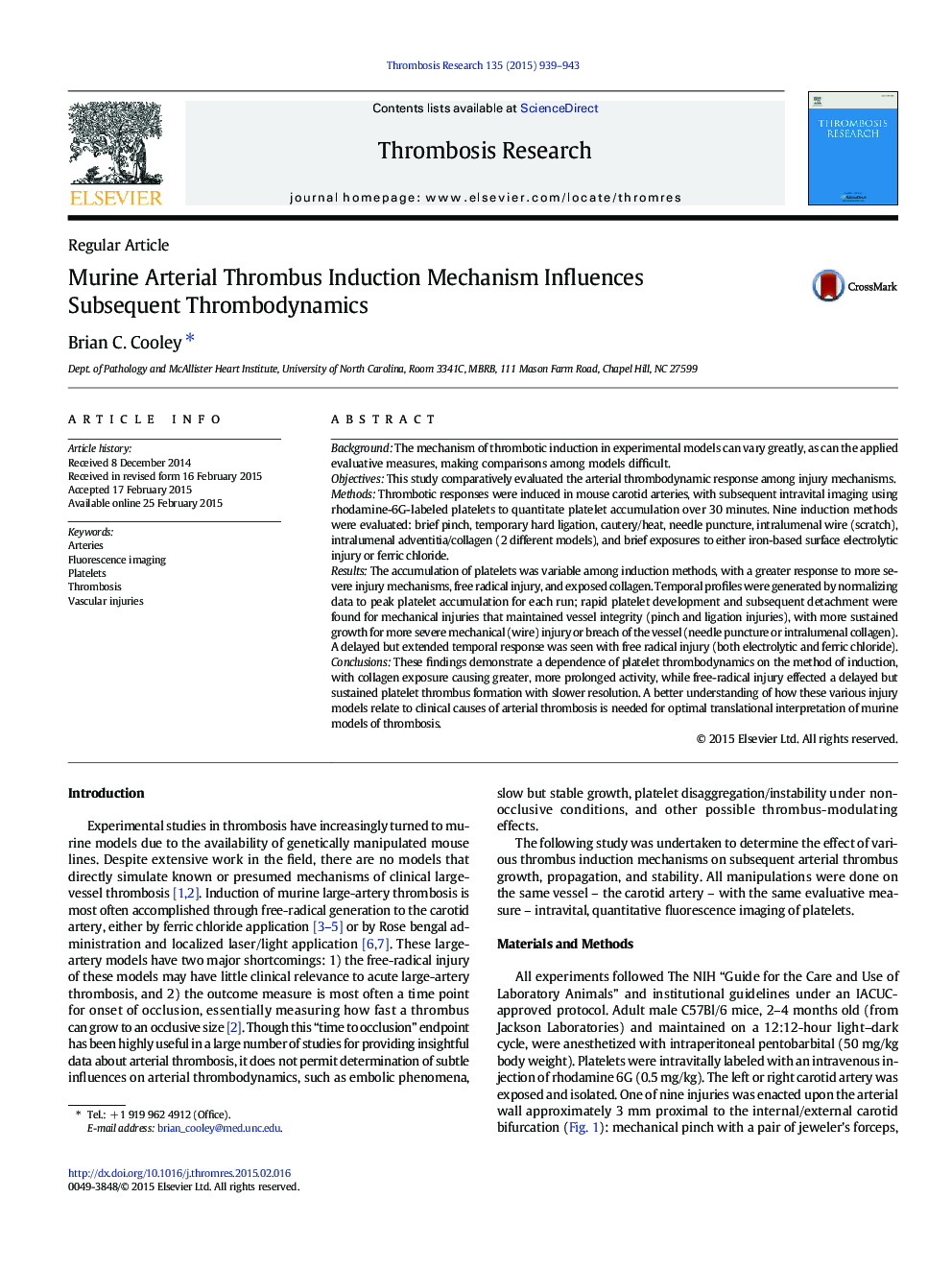| کد مقاله | کد نشریه | سال انتشار | مقاله انگلیسی | نسخه تمام متن |
|---|---|---|---|---|
| 6001598 | 1182953 | 2015 | 5 صفحه PDF | دانلود رایگان |
- Platelets at an arterial thrombus site accumulate variably, depending on thrombus induction method.
- Mechanical injuries cause rapid platelet development and subsequent detachment.
- More sustained growth occurs with more severe injury or breach of the vessel.
- Free-radical-based injury results in delayed but prolonged platelet thrombus growth.
BackgroundThe mechanism of thrombotic induction in experimental models can vary greatly, as can the applied evaluative measures, making comparisons among models difficult.ObjectivesThis study comparatively evaluated the arterial thrombodynamic response among injury mechanisms.MethodsThrombotic responses were induced in mouse carotid arteries, with subsequent intravital imaging using rhodamine-6G-labeled platelets to quantitate platelet accumulation over 30Â minutes. Nine induction methods were evaluated: brief pinch, temporary hard ligation, cautery/heat, needle puncture, intralumenal wire (scratch), intralumenal adventitia/collagen (2 different models), and brief exposures to either iron-based surface electrolytic injury or ferric chloride.ResultsThe accumulation of platelets was variable among induction methods, with a greater response to more severe injury mechanisms, free radical injury, and exposed collagen. Temporal profiles were generated by normalizing data to peak platelet accumulation for each run; rapid platelet development and subsequent detachment were found for mechanical injuries that maintained vessel integrity (pinch and ligation injuries), with more sustained growth for more severe mechanical (wire) injury or breach of the vessel (needle puncture or intralumenal collagen). A delayed but extended temporal response was seen with free radical injury (both electrolytic and ferric chloride).ConclusionsThese findings demonstrate a dependence of platelet thrombodynamics on the method of induction, with collagen exposure causing greater, more prolonged activity, while free-radical injury effected a delayed but sustained platelet thrombus formation with slower resolution. A better understanding of how these various injury models relate to clinical causes of arterial thrombosis is needed for optimal translational interpretation of murine models of thrombosis.
Journal: Thrombosis Research - Volume 135, Issue 5, May 2015, Pages 939-943
